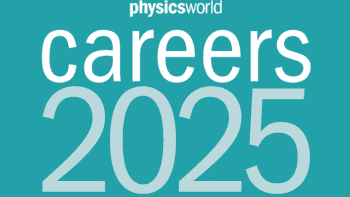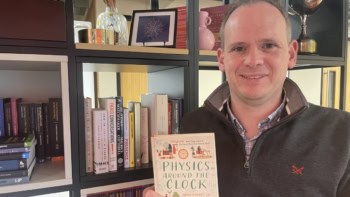By Hamish Johnston
How do you decide if one academic physicist is “better” than another — a tricky question that has perplexed funding agencies and hiring committees for years.
You could simply tote up how many times he/she is cited in papers by other researchers to give a measure of how an individual is contributing to the collective development of scientific knowledge.
Sounds easy enough, but the tricky bit is assessing the quality of those citations. Being name-checked by a Nobel-prize winner is presumably better than being cited by an obscure researcher, for example
It’s pretty complex stuff — so it’s not surprising that four physicists in the emerging field of complexity science have tackled the problem using “ranking algorithms developed in the context of the World Wide Web”. These are clever programs similar to those Google uses to rank a website in terms of how many other highly-ranked websites link to it.
You can read all about it in a preprint entitled Diffusion of scientific credits and the ranking of scientists by Filippo Radicchi, Santo Fortunato, Benjamin Markines and Alessandro Vespignani in Italy and Indiana.
The researchers looked at the entire Physical Review publication archive from 1893-2006 — that’s more than 400,000 papers and nearly 4 million references to other Physical Review papers.
They began by creating a “paper citation network” by looking at how one paper (call it a) cites one or more papers ( b and c say).
The team then broke the links down in terms of authors. If a has one author ( a1 ) and b has two authors( b1 and b2), then b1 and b2 would each get half a link from a1. The result is a “weighted citation network between authors” or WACN.
In order to get a measure of the impact of an individual physicist, the team devised the “science author rank algorithm” or SARA. Each author of a paper is given a “credit”, which is divided amongst all the other authors he/she has cited. These credits “diffuse” back in time — this is where the equations get a bit hairy — and the impact of an individual physicist is related to how many credits diffuse to him or her.
The team then used SARA to rate physicists. When they looked at the period 1967-1973, seven out of the top ten were Nobel laureates. The top five (Gell-Mann, Weinberg, Schwinger, Feyman and Lee) are mostly known for their work in particle physics. Philip Anderson in sixth place, is the highest condensed matter physicist in the ranking.
Fast-forward to 2003-2004 and there are only two Nobel winners in the top ten (three if you count Walter Kohn who bagged a chemistry prize in 1998). Philip Anderson took first place and Steve Weinberg is the only particle physicist in the top five — the rest are condensed matter researchers.
If you look a little further down the list you see leading lights in quantum information — Ignacio Cirac at sixth place and Peter Zoller in twelfth — a portent of things to come perhaps.
So can we conclude that leading condensed matter physicists are better than they were twenty years ago? Probably not. Remember that this study only looks at Physical Review journals, and maybe particle physicists aren’t publishing there anymore? Or maybe the citation cultures of particle and condensed matter physics have changed over the past twenty years.
Oh, and if your are wondering how SARA ranks you or your friends, just type your name in here.



